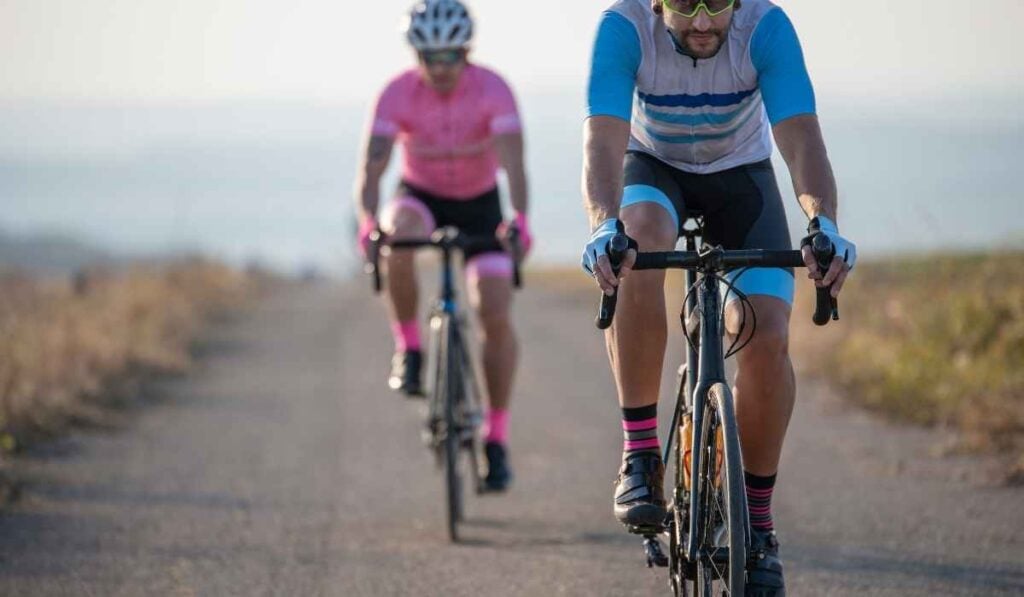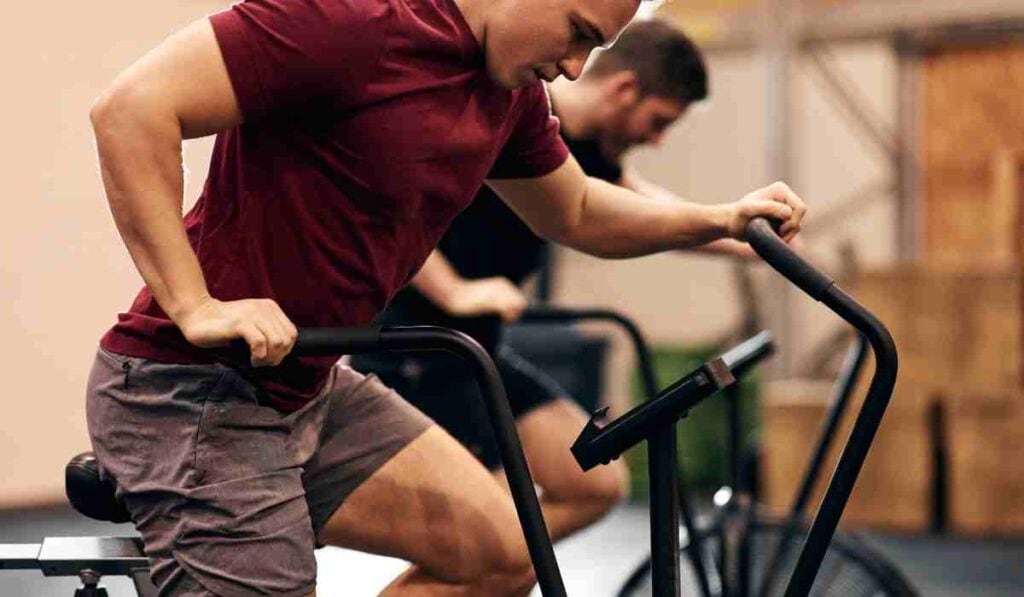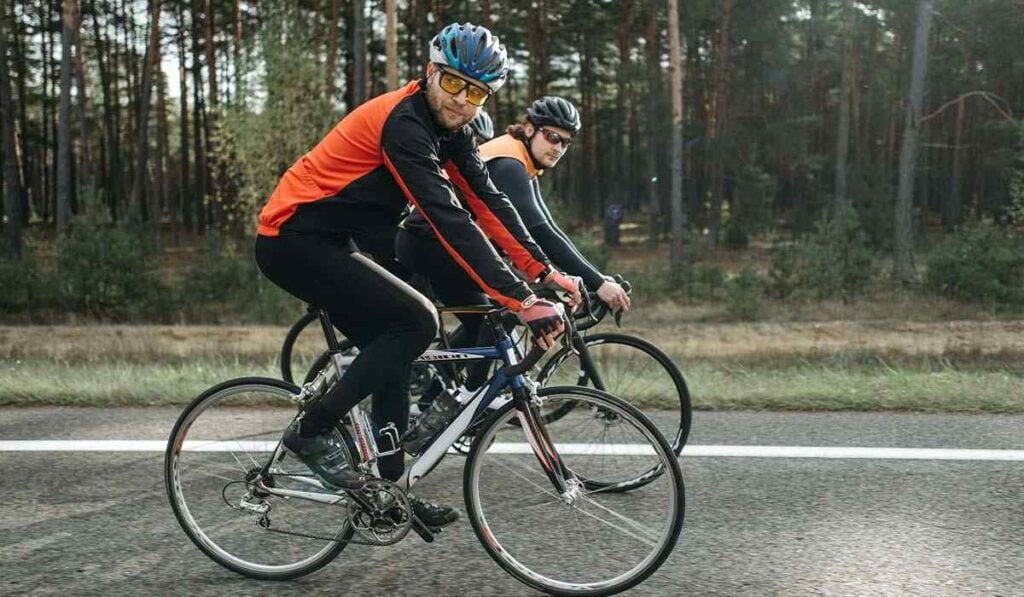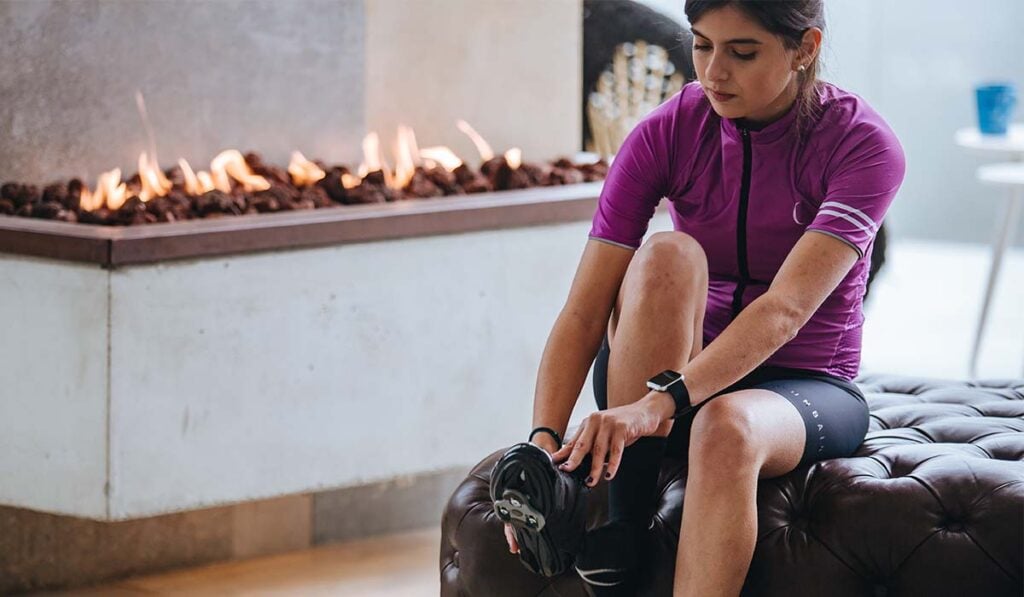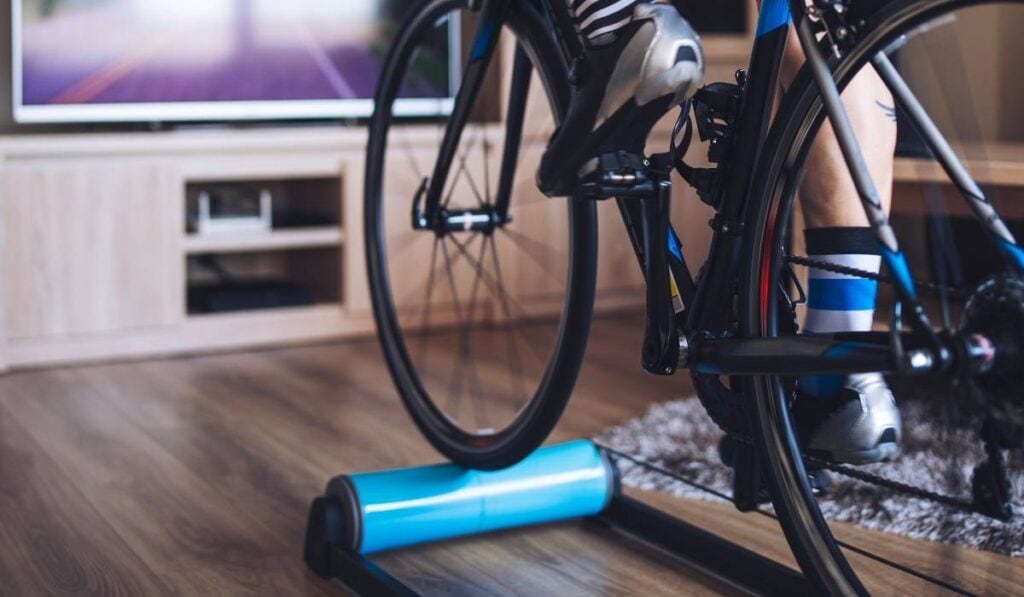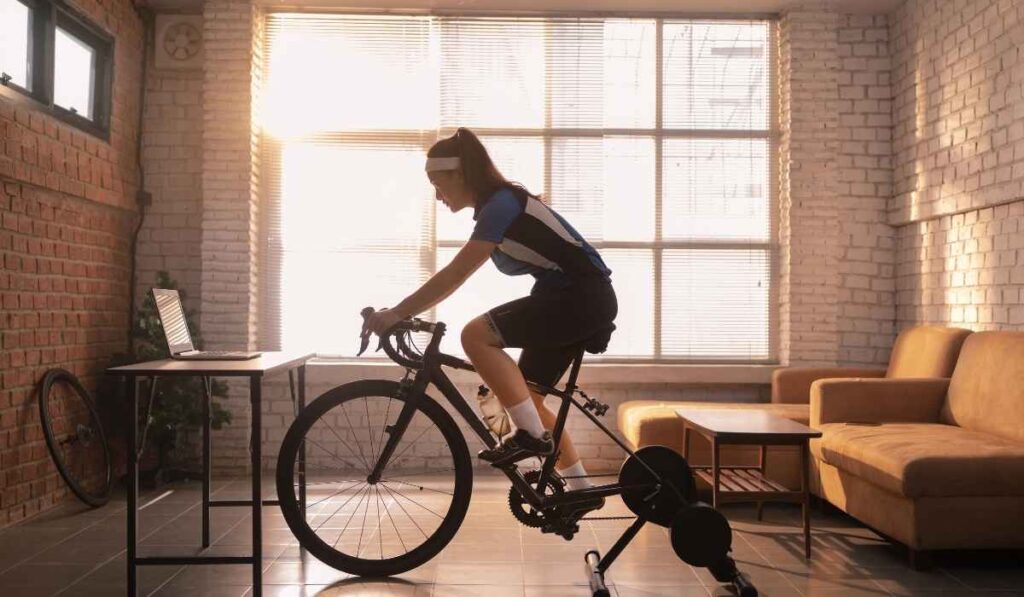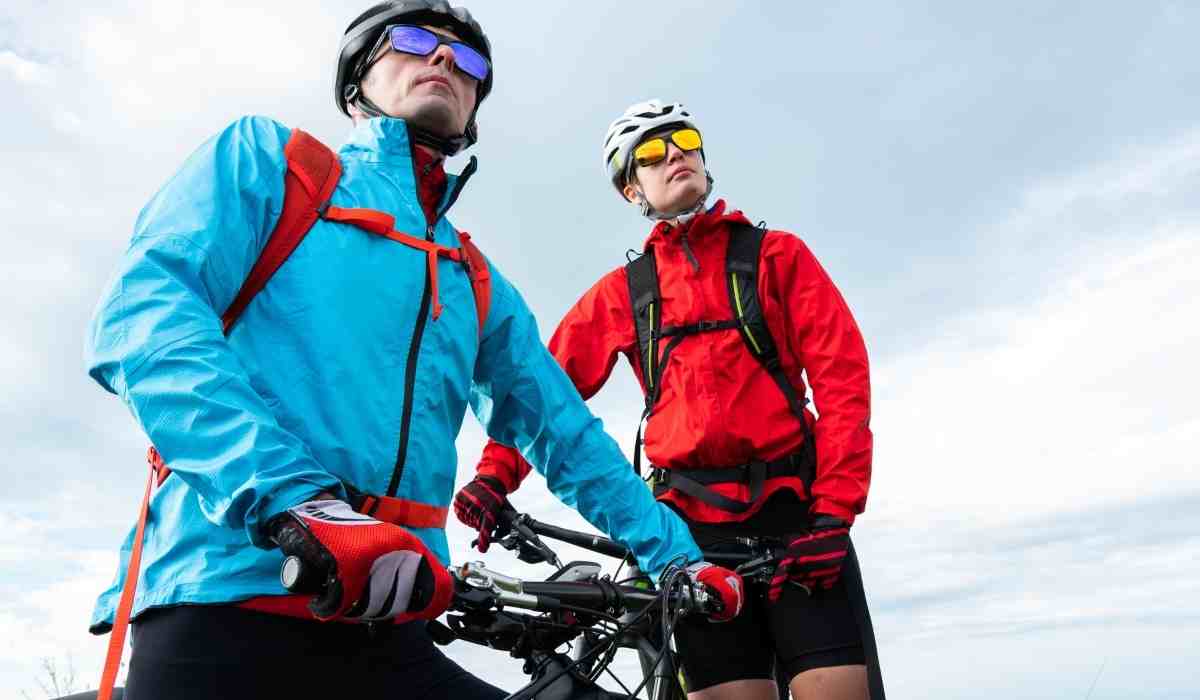
15 Cycling Recovery Tips
Every cyclist knows the importance of hard work and dedication. But cycling recovery is often the most overlooked part of a comprehensive training program. Although no one glamorizes cycling recovery, it’s just as important as active training. If you struggle with cycling recovery, you’re not alone! Let’s dive deeper into the concept of cycling recovery, what it means, and why it’s important. We’ll also provide some cycling recovery tips to maximize your efforts.
What is cycling recovery and why is it important?
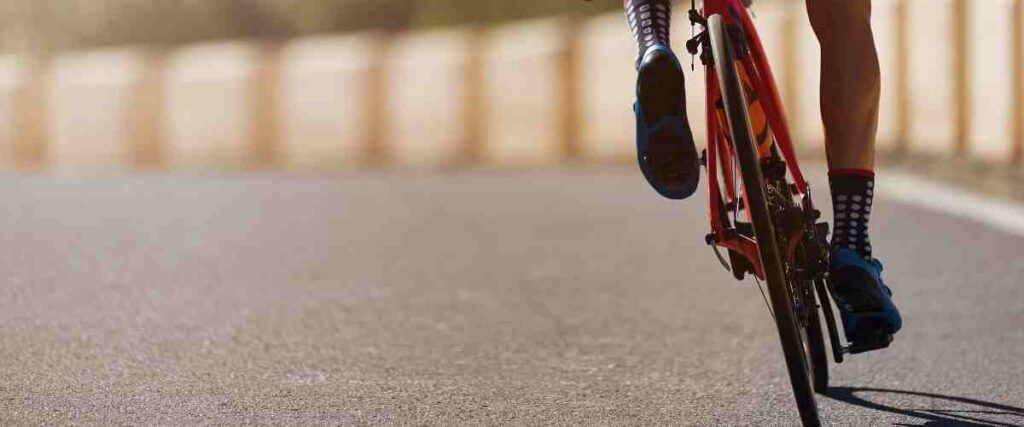
Cycling recovery is the process of giving your body a physical and mental break from the grind of consistent training. When you’re training, your body undergoes a lot of stress. That stress breaks the muscles and body down. During the cycling recovery time, your muscles repair themselves, grow stronger, and adapt to the challenge. Then, the next time you tackle a tough cycling workout, it feels a little bit easier.
Taking time for rest and recovery isn’t just a recommendation; it’s an essential part of any cycling training program. You won’t make progress toward your goals if you don’t give your body enough time to recover and rest after cycling. You’re also more likely to develop injuries or illness due to overtraining.
How many rest days should I take after cycling?
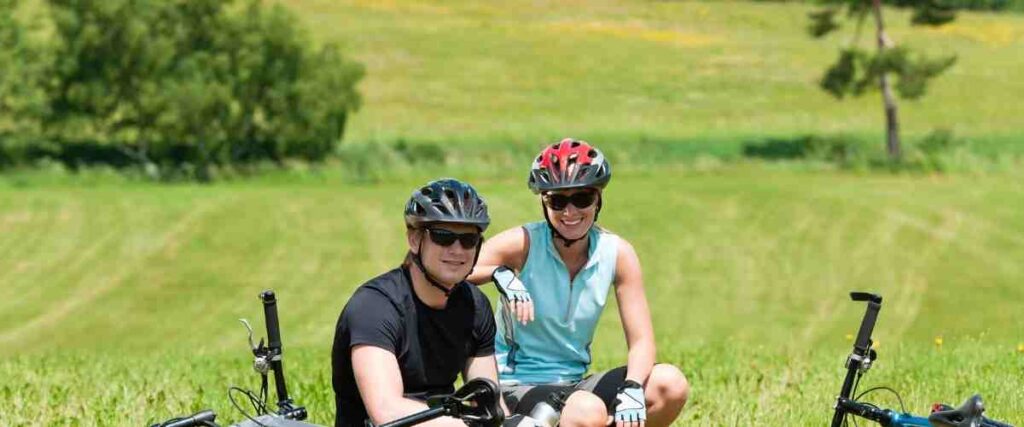
A rest day is a day that you don’t cycle at all. On rest days, you can still be physically active (take a walk, do yoga, go for a swim, etc.) but you don’t get on your bike at all.
If you’re wondering, “How long should I rest after cycling?” you’re not alone. This question is tricky because there’s no standardized solution. The number of rest days you should take depend on you, your body, and what you feel you need.
Many cyclists can complete two or three solid rides before needing a rest day, but this isn’t a hard and fast rule. The best way to determine how many rest days you need is to listen to your body and get to know the signals it sends you.
For instance, maybe try taking one day off and see how you feel the following day. If you try to cycle but are mentally exhausted and can’t push yourself, you probably need more rest. Or, if you usually take one day off but consistently can’t meet your training goals, you might need to schedule more rest days.
Learning how to listen to your body and understand what it’s telling you takes time. But with time and practice, you’ll find what works best for you!
What happens if you cycle too much?
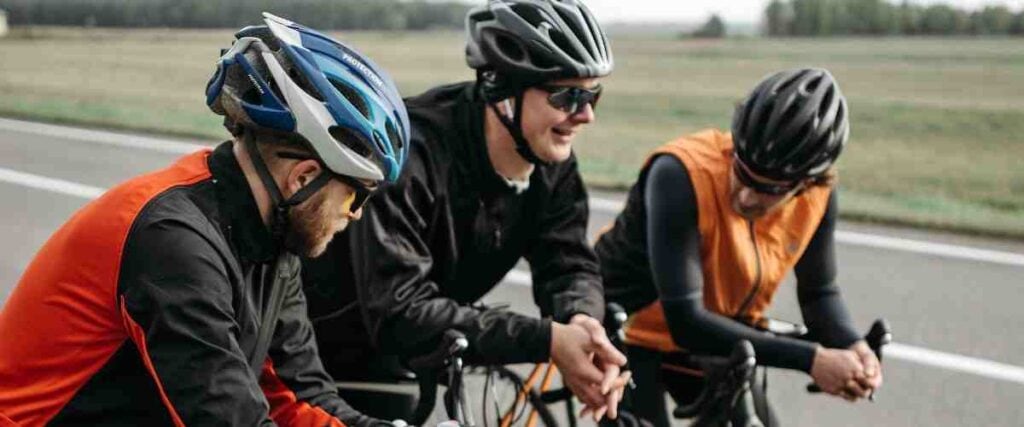
It’s essential to strike a balance between training and cycling recovery because overtraining can be dangerous and destructive to your body.
Overtraining syndrome or OTS is a real thing. Many endurance athletes experience this when their body endures too much damage from training and cannot repair itself. Some common signs of overtraining include:1
- Tiredness or exhaustion
- Irritability
- Insomnia
- Headaches
- Frequent sickness
- Reduced cycling performance
- Decreased appetite
- Depression
- Sudden mood swings
If you’ve just started cycling, you can protect yourself from OTS by taking it slow. Don’t take on too much too soon! Start with short rides and build up to the longer, more intense ones. Keep a log of your rides, how you feel after each one, any injuries you develop, and your performance levels. Use these notes as a guide to establishing a healthy activity level for your body.
Our top 15 cycling recovery tips
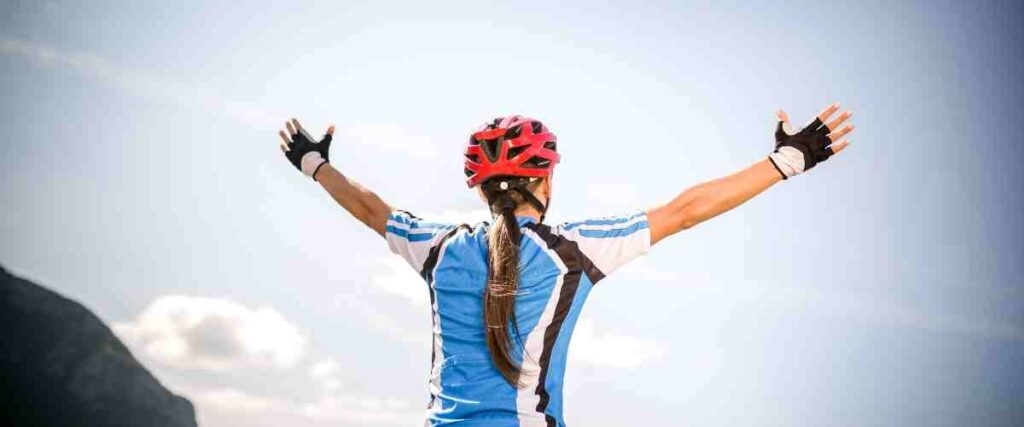
Whether you’re a new or experienced cyclist, these cycling recovery tips will help you make the most of the time you spend recovering and resting.
1. Cool down before you completely stop riding
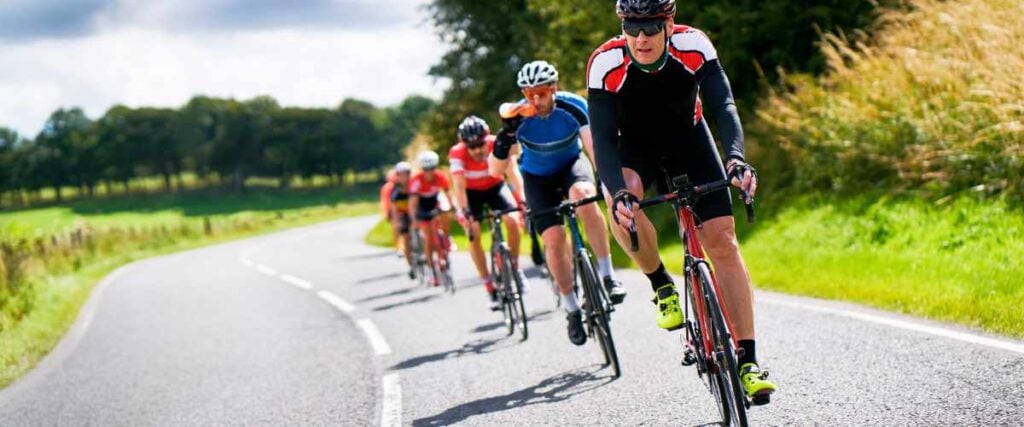
After cycling, recovery should always begin with the cool-down process. Immediately after you stop biking, take a few minutes to cool down. Continue cycling during this time, but continue at a very easy pace. Cooling down after a ride will minimize lightheadedness, help your body eliminate metabolic waste (like lactic acid), and get fresh blood flowing.
2. Refuel your body with a healthy diet

Eating well will help your muscles repair themselves after long and hard cycling workouts. Immediately after cycling, wait 30 minutes before eating and avoid indulging in a big meal. Instead, eat carbs and protein to refuel. On your cycling recovery days, focus on eating a well-balanced diet of lean protein, carbs, healthy fats, vegetables, and fruits. Basically, make sure your diet is full of whole foods. This doesn’t mean your food has to be bland! You can make healthy and delicious meals that are both satisfying and good for you.
3. Choose the right cycling recovery drink
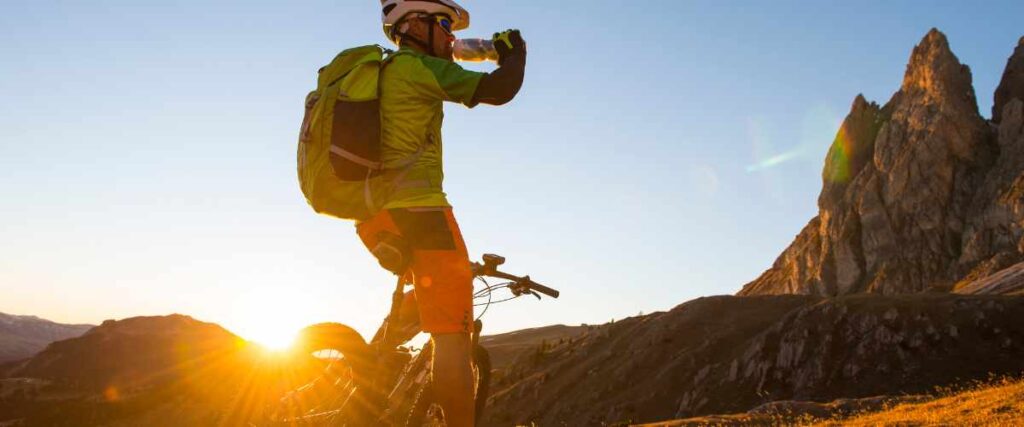
Dehydration can slow down the cycling recovery process. Make sure you’re drinking enough water every day. For adult males and females, that’s 15.5 cups and 11.5 cups, respectively.2 Electrolyte drinks are great too, and chocolate milk is another excellent cycling recovery drink for cyclists. It’s very high in protein and carbs, which cyclists need after a challenging bike ride.3
4. Put your legs up while cycling recovery
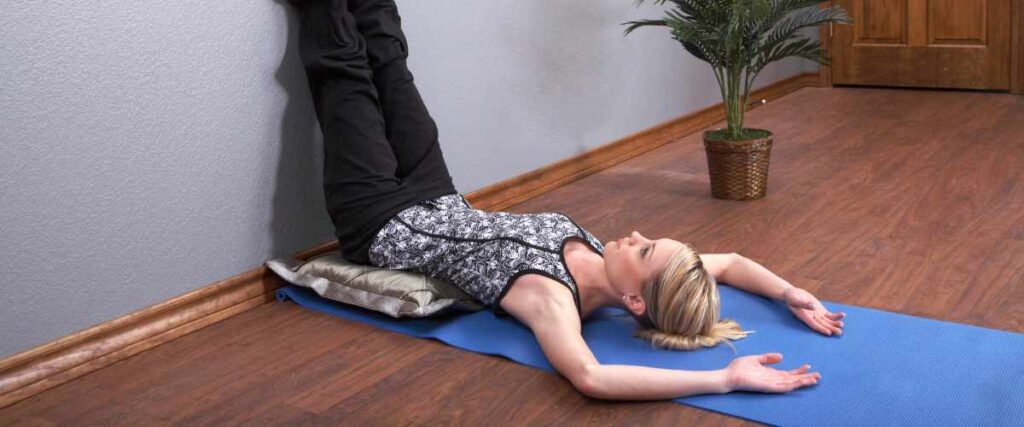
Elevating your legs after a hard ride can decrease swelling, stretch out your hamstrings, and drain any fluids pooling in your legs. The easiest way to do this is to lay on the floor with your legs up against a wall. This will also help direct blood flow back to your brain and reduce dizziness after a race. For best results, stay in that position for a few minutes.
5. Try active cycling recovery
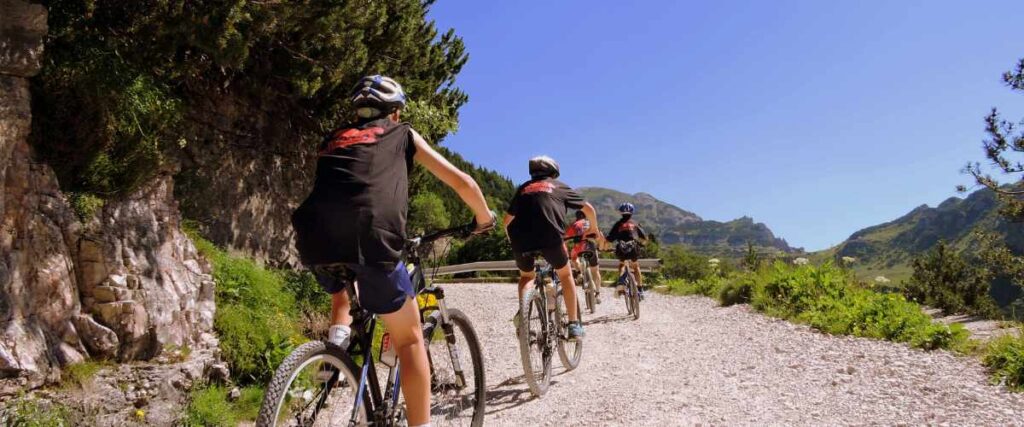
Can cycling be active recovery? Absolutely! Most professional riders do cycling recovery rides. For many cyclists, a cycling recovery ride is a 60 to 90-minute ride at less than 50% of functional threshold power or FTP.
6. Avoid alcohol

Although it probably won’t hurt you to have a single beer, drinking too much alcohol can harm your cycling recovery, especially if you drink it within a few hours after finishing a ride. Alcohol will reduce your body’s ability to repair and rebuild its muscles and diminish rehydration. Heavy alcohol consumption will also reduce sleep quality and decrease mental performance the next day, which can harm your training.
7. Massage sore muscles

Use a foam roller to delay the onset of muscle soreness after a hard ride. After foam rolling, your muscles will feel less tight, and you’re less likely to experience injuries. You can also use a hand-held percussion device to relieve deeper muscle tension and reduce pain and stiffness.
8. Stretch
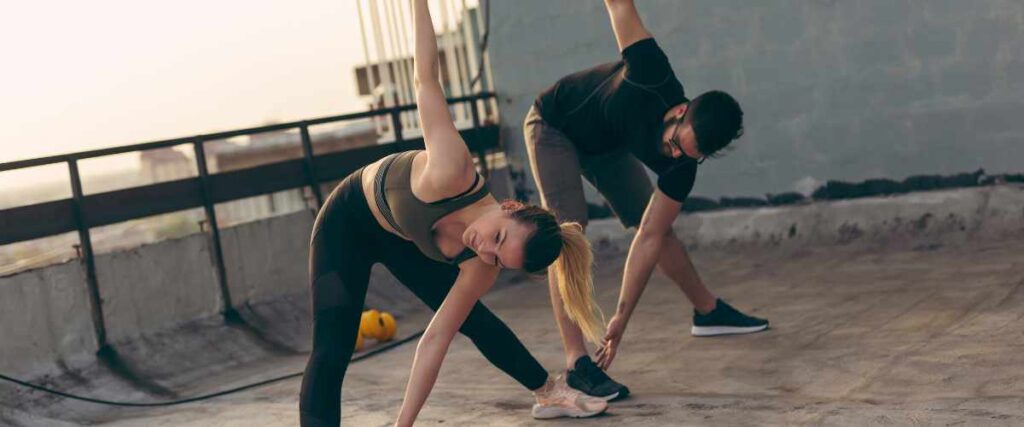
Stretching will help you maintain flexibility and limit injuries while you’re training. There aren’t any specific stretches that are best for cyclists. Instead, it’s better to focus on the muscles that feel tight to you and give them some attention.
9. Practice mindfulness meditation
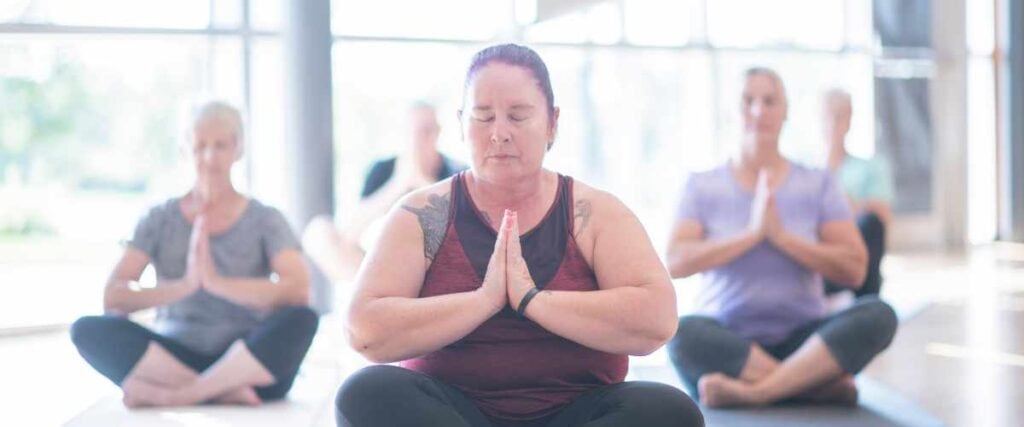
Slow your heart rate and breathing with mindfulness meditation. Just a few minutes of meditation after a ride can signal to your body that the hard work is done and it’s time to recover. Mental cycling recovery is just as important as physical cycling recovery, and it plays a vital role in your ability to stay motivated and push yourself when needed.
10. Wear compression socks
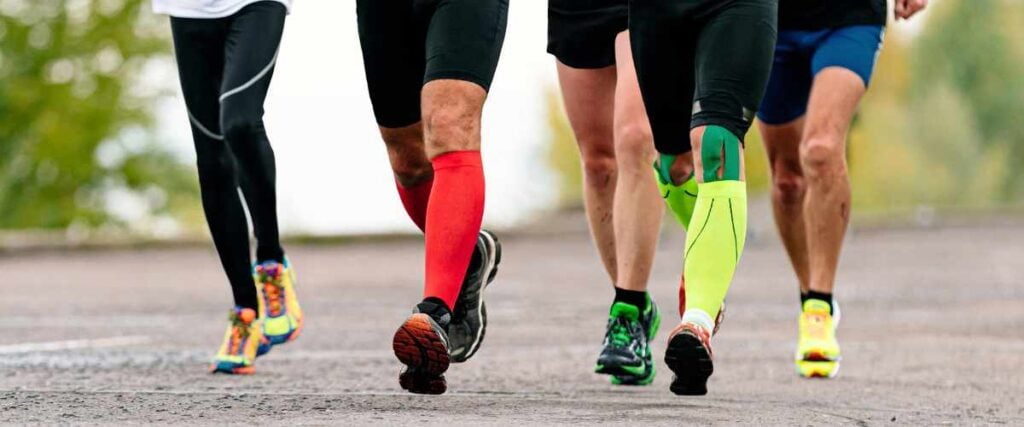
Compression socks can increase blood flow, reduce swelling, and minimize soreness. They’ll also accelerate the recirculation process to speed up cycling recovery. These socks are particularly helpful immediately after a long and hard race. Wearing them for a few hours can help reduce the swelling that many cyclists experience after a race.
11. Take a recovery week
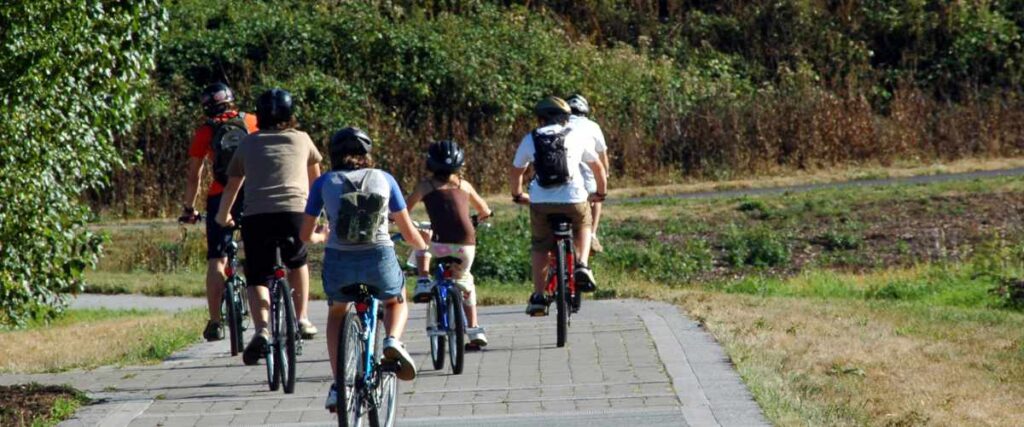
A cycling recovery week follows the structure of a typical training week, except with short and easy cycling workouts. Many cyclists take a cycling recovery week at the end of every training block, or about every three to six weeks, depending on their cycling training plan. A week might seem like a long time for active cycling recovery, but by the end, you should feel strong and ready to take on your next training block.
12. Get good quality sleep
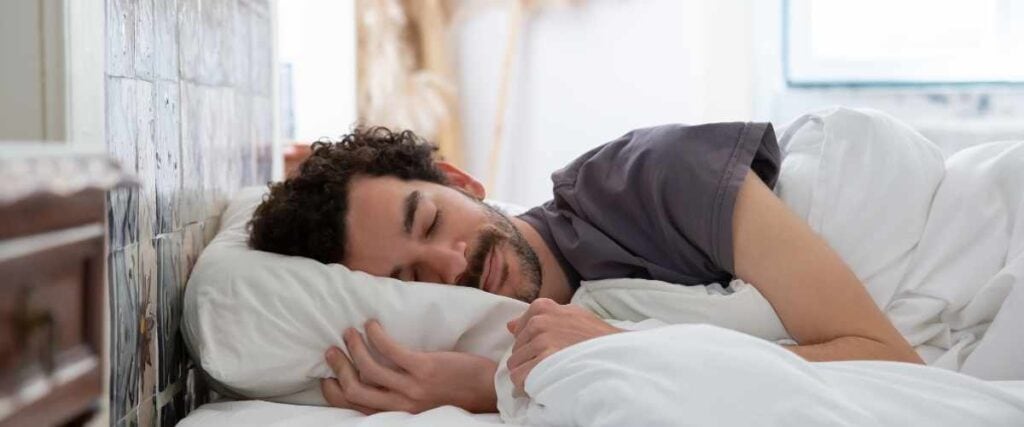
Good quality sleep is essential for cycling recovery. While you sleep, your muscles repair themselves and grow. A lack of sleep will increase your cortisol production (a stress hormone) and make it more difficult to focus during your training sessions. To recover and train at your best, you need at least seven hours of sleep each night, but eight to nine hours is ideal. If you can squeeze in a 30-minute nap during the day, that’s even better.
13. Consider taking supplements
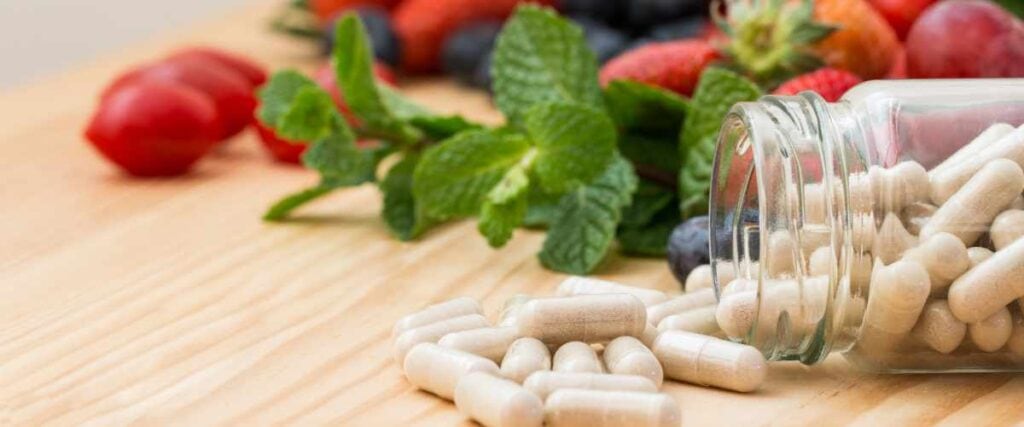
If you’re eating a healthy and balanced whole foods diet, you probably don’t need to take any supplements. However, many cyclists swear by supplements like beta-alanine, a nonessential amino acid that may improve muscular performance.4 Cordyceps-M mushrooms may also boost performance during high endurance exercise.5 Check with your doctor before you start taking any new supplements and ask them to help you locate reputable retailers for safe, high-quality supplements.
14. Rest
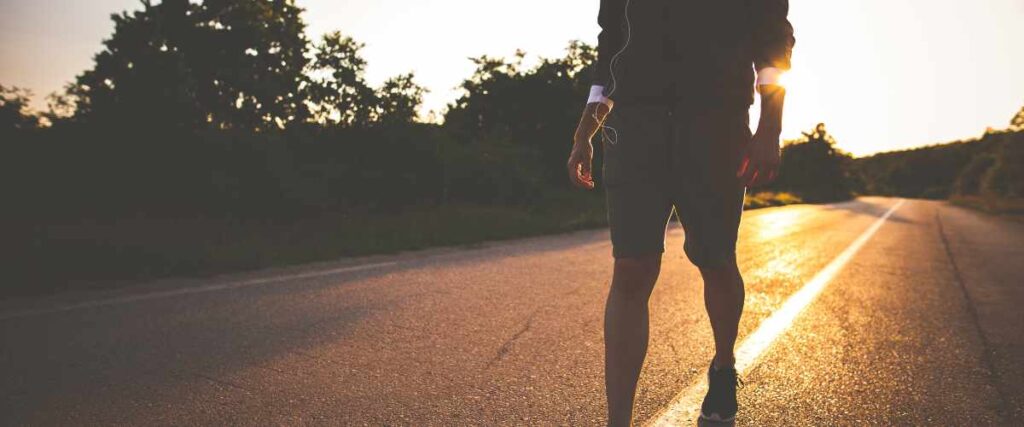
Cycling recovery and rest days are two entirely different things. A cycling recovery day can involve active recovery, like a leisurely bike ride, a walk, or a gentle swim at the pool. On the other hand, rest days are days when you do as little physical activity as possible. That means you put your legs up, watch TV, or read a good book. Enjoy it!
15. Listen to your body
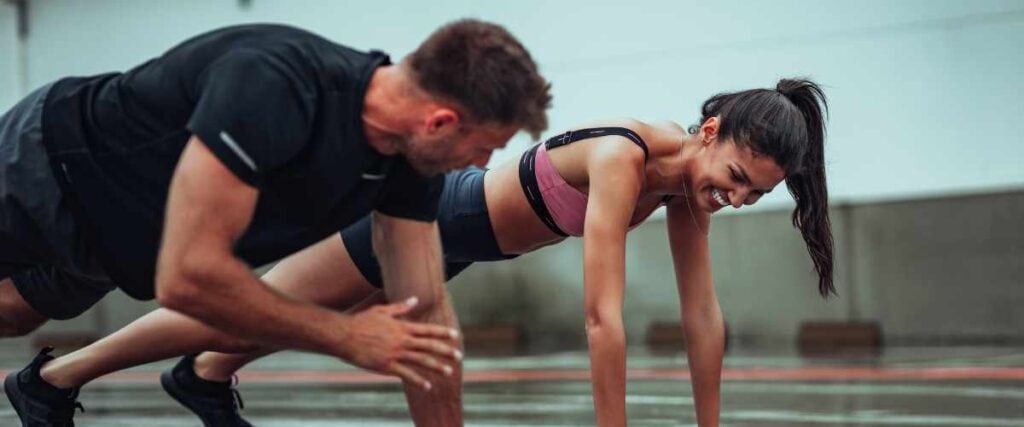
As we mentioned above, one of the best things you can do is listen to your body. Pay attention to physical and mental cues that may indicate hunger, exhaustion, or overtraining, and take the necessary steps to care for yourself.
Key Takeaways:
Cycling recovery is just as important as active training for cyclists. When you take adequate time to heal and repair your body, you’ll feel better and your cycling performance will continue to improve. Following these cycling recovery tips will help you make the most of your recovery and days off.References:
- Kreher, J. B., & Schwartz, J. B. (2012). Overtraining Syndrome. Sports Health: A Multidisciplinary Approach, 4(2), 128–138. https://doi.org/10.1177/1941738111434406
- Water: How much should you drink every day? (2020, October 14). Mayo Clinic. https://www.mayoclinic.org/healthy-lifestyle/nutrition-and-healthy-eating/in-depth/water/art-20044256
- Cycling team studies chocolate milk as recovery drink. (2006, April 10). University of Nebraska Medical Center. https://www.unmc.edu/news.cfm?match=2666
- Santana, J. O., de Freitas, M. C., dos Santos, D. M., Rossi, F. E., Lira, F. S., Rosa-Neto, J. C., & Caperuto, E. C. (2018). Beta-Alanine Supplementation Improved 10-km Running Time Trial in Physically Active Adults. Frontiers in Physiology, 9. https://doi.org/10.3389/fphys.2018.01105
- Hirsch, K. R., Smith-Ryan, A. E., Roelofs, E. J., Trexler, E. T., & Mock, M. G. (2016). Cordyceps militaris Improves Tolerance to High-Intensity Exercise After Acute and Chronic Supplementation. Journal of Dietary Supplements, 14(1), 42–53. https://doi.org/10.1080/19390211.2016.1203386



